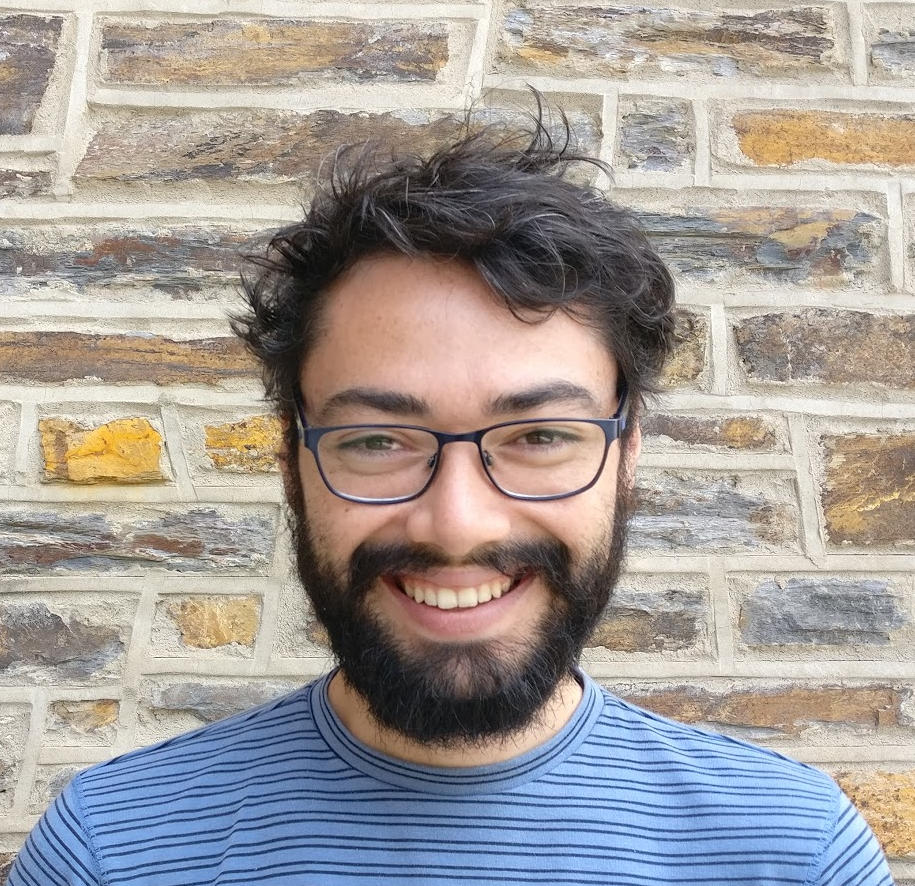Edgar M. Medina Tovar, a native of Bogotá, Colombia, is currently a PhD student in the Department of Biology at Duke University. In Dr. Nicolas E. Buchler’s lab, Edgar studies the zoosporic fungus Spizellomyces, to develop this non-model organism into a genetically tractable system. The zoosporic fungi comprise a group of fungal lineages that have a fascinating biology and likely hold many clues to the origin of fungi and the Opisthokonts. Although they are full blown fungi, they are particularly interesting to Edgar because they have retained characteristics from the Opisthokont ancestor that we only tend to associate with animal lineages. These fungi have reproductive spores that lack cell wall, crawl on surfaces and swim with a single posterior cillium nucleated from a centriole. Once they find a suitable niche, the spores retract their cillium, form a cell wall and germinate through a hypha-like structure with polarized growth called rhizoid (all this happens within a couple of hours!). At this stage the germinated spore displays more classical fungal behavior, to eventually produce and release hundreds of new zoospores. Edgar believes the mechanisms that underlie this duality and how it is regulated can provide clues to what lies at the core of what it means to be a fungus and how it deviates from the evolutionary trajectory followed by the animal lineage.

Despite animals and fungi being sibling Opisthokonts, the core transcription factors that control commitment to cell division (E2F and SBF, respectively) and their repressors (Rb and Whi5, respectively) do not appear to have a shared molecular ancestor. Using comparative genomics Edgar showed that SBF, which contains a viral-derived DNA binding domain, was acquired very early in the evolution of fungi by horizontal gene transfer. Also, that this viral-derived transcription factor still coexists with the ancestral E2F in some early-diverging fungi, establishing a hybrid cell cycle control network. Subsequently, the ancestor of Dikarya lost the ancestral E2F and kept SBF. Finally, yeast SBF has an overlapping DNA-binding specificity to that of human E2F. This lead to the working hypothesis of Edgar’s current work: That a viral SBF hijacked cell cycle control in the dawn of Fungi by binding the E2F cis-regulatory sequences of E2F-responsive promoters, and thereby gained the ability to control the G1/S transition and pushing cells to proliferation. Edgar is a recipient of the Duke University School of Medicine Chancellor’s Scholarship in 2012, and for this work, the Meredith Blackwell Award for best grad student talk at MSA 2017. After completing his doctorate, Edgar plans to continue in academia with a postdoctoral position.
What is your favorite fungus and why?
Saccharomyces, if I had to choose one, just as the representative of the hard working guild that brings delicious fermentation products to our life.
What is your favorite thing about fungi?
Fungi are the ultimate éminence grise of the plant world. Fungi are not only arguably the most important plant pathogens, but they rule everything, from plant seed germination to their growth and decay. The establishment of mycorrhizae and endophytism was probably key for the diversification of plants and a necessity for their colonization of land. Also, they are probably the main drivers of nutrient allocation and carbon cycling in our forests. When I see a plant, I see a puppet of a bunch of sly fungi.
Who is your mycology role model?
Much of my current work has strong foundations on the work of Melvin S. Fuller. Reading his papers on zoosporic fungi at a time in which they were emerging as models of cell biology always generates a whirlwind of ideas and reminds me of the power of classical mycology. On the other hand, I think mycology is nowadays such a multidisciplinary science that is hard to have only one role model, so I have many, and would be unfair to say some and leave others out. Nevertheless, a role model should also include characteristics that go beyond “being good at science”. I really look up to PI’s that try to do exciting basic science, do not bend to the “safe fundable zone”, and are great mentors. I am glad there are still many out there and I am lucky to have one as advisor. Unfortunately, it is unclear how you get trained to become a good mentor and is hard to survive and get funded as a PI doing exciting fringe science in the current funding landscape.
What do you do in your free time?
I am all about coffee and food, so I really like cooking and baking. I seem to work with more yeast at home than in the lab. I like sourdough baking and playing with fermentations. Also, I really like road cycling and trail running, allows me to make space to eat even more, though I have relied mostly on running lately because is hard to get the time for long rides and there is an epidemic of bad drivers around here. Also, being in the forest reminds me a bit of home.
Anything else you’d like to share?
I have always liked scientific illustration and I think good figure design is key for a good paper, facilitating communication with the reader. This has led me to sometimes being teased about spending maybe too much time making figures and as my go-to procrastination. I fell in love with it when I discovered Haeckel’s work during my undergrad, fungi have beautiful microscopic and macroscopic structures with incredible elegance.


Leave a Reply